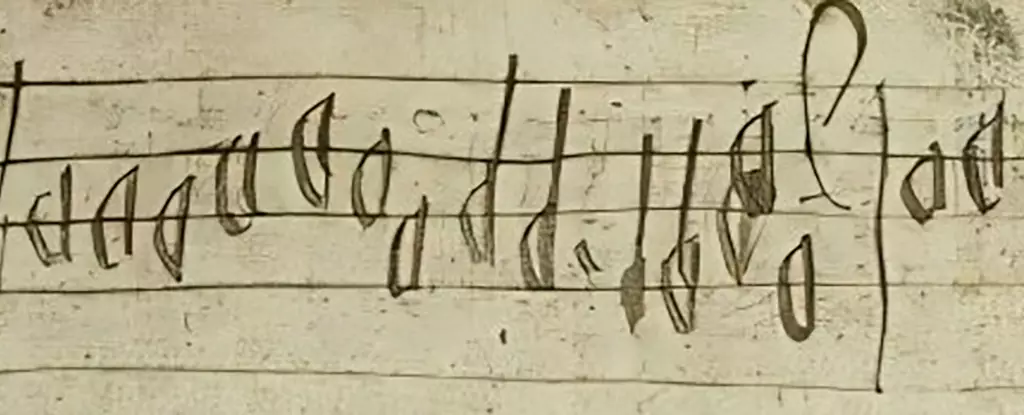Music possesses a unique ability to evoke memories and transport listeners through time. Its capacity to connect us to our roots or distant eras is unparalleled. Recently, researchers made a remarkable discovery that sheds light on Scotland’s rich musical past. A music manuscript dating back to the 16th century has emerged from the pages of an important historical text known as the Aberdeen Breviary. This finding opens doors to understanding a musical tradition that had been long overshadowed by the Protestant Reformation, asserting the presence of a vibrant liturgical culture in Scotland.
The Aberdeen Breviary, printed in 1510, holds significant historical and cultural value. As the first book of its kind produced in Scotland, it serves as a foundation for the nation’s early written religious practices. Within its pages, the manuscript of 55 musical notes was discovered in the margins — a seemingly simple yet profound treasure that hints at the musical lives of Scots over four centuries ago. Initial perceptions of this medieval artifact may focus on its religious content, but it unexpectedly reveals the intertwined nature of music and spirituality in Scotland during the pre-Reformation period.
The musical fragment itself, while modest in size, represents an important piece of the puzzle in resurrecting Scotland’s auditory heritage. Through comparative analysis, researchers from KU Leuven and the University of Edinburgh identified similarities between the fragment and the Christian chant known as “Cultor Dei, memento,” still performed today in certain Anglican contexts. This chant’s resilience across centuries speaks volumes about the continuity and adaptation of musical traditions, enabling research to bridge gaps in historical understanding.
Despite the fragment lack of attribution, its complexity as a polyphonic composition hints at a sophisticated musical tradition. Musicology expert David Coney emphasizes the impact of this discovery, suggesting that even a singular line of music can lead historians closer to reconstructing a larger tapestry of sacred melodies that once filled Scotland’s churches. This fragments’ recovery invites not only curiosity but also scholarly pursuit by providing a gateway to exploring the vocal harmonies and instrumental arrangements of the period.
Listening to the reconstructed piece enables us to appreciate a soundscape that has remained dormant for centuries. This revitalization of musical experience enriches our understanding of the socio-religious environment leading up to the Reformation, which, contrary to popular belief, was not devoid of artistic expression. Instead, as musicologist James Cook notes, Scotland’s ecclesiastical settings were home to a flourishing musical culture. This revelation challenges prevailing assumptions about the era’s music and urges historians to reassess their methodologies in investigating the period’s cultural output.
The research team’s findings touch upon the nuances of sacred music traditions, suggesting that an abundance of unexamined texts may hold similar musical inscriptions waiting to be uncovered. These marginal notes, often dismissed as trivial, could potentially house further fragments that enhance our understanding. The quest for these hidden treasures emphasizes the importance of comprehensive archival research in cultural history.
The excitement generated by this discovery inspires a rallying call among musicologists and historians alike: to delve deeper into Scotland’s literary and musical archives. As Paul Newton-Jackson articulates, Scotland’s libraries and collections are ripe for exploration. The prospect of uncovering additional 16th-century artifacts may offer fresh insights and expand our understanding of the country’s artistic heritage.
In essence, the 55-note snippet of music found within the Aberdeen Breviary is not merely a relic of the past; it is an essential link to Scotland’s cultural identity and the historical narratives shaped by music. As we continue to explore these ancient sounds through dedicated research, we redefine our grasp of Scottish history, enriching our cultural landscape and ensuring that the echoes of the past resonate with future generations.

